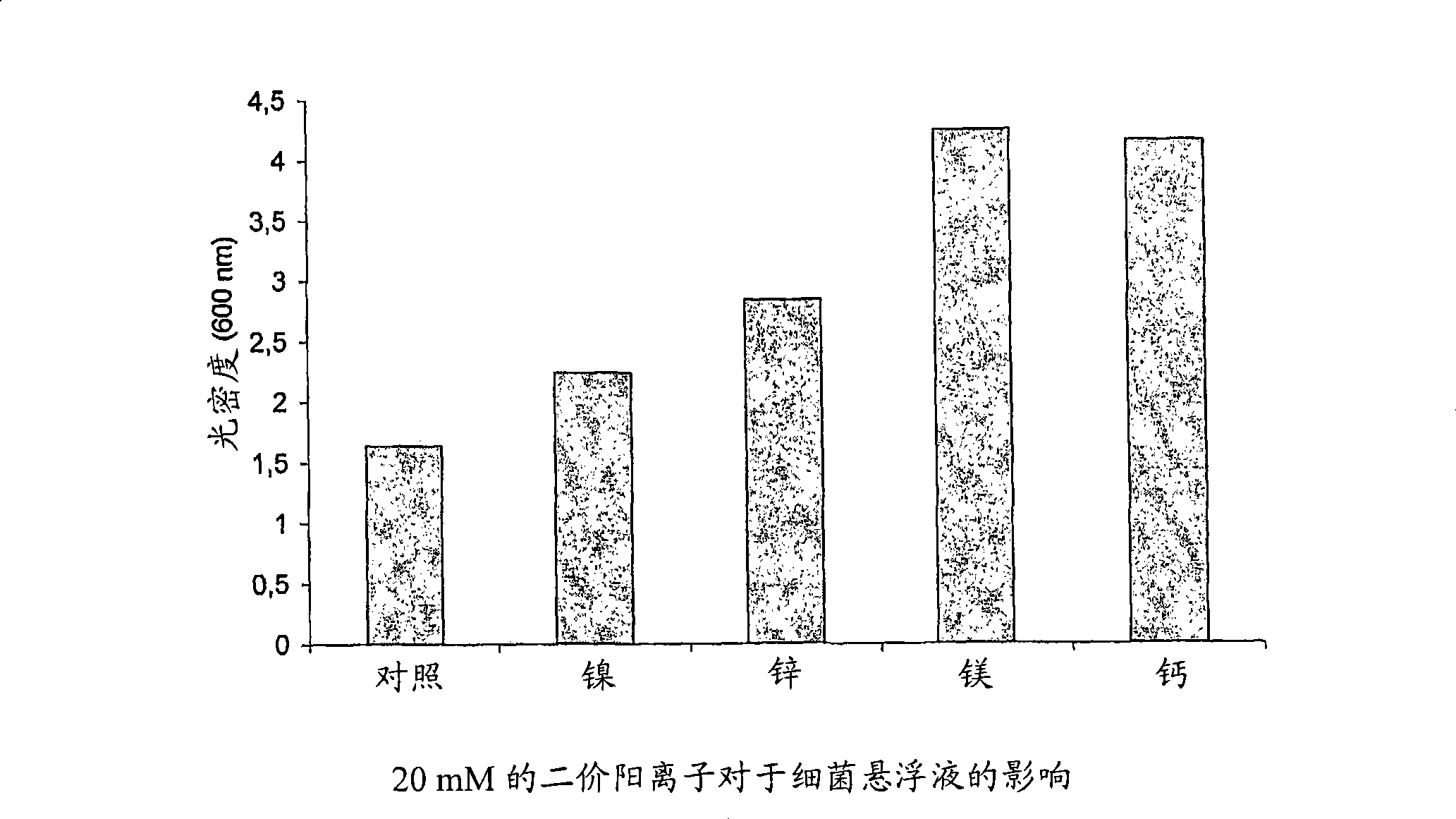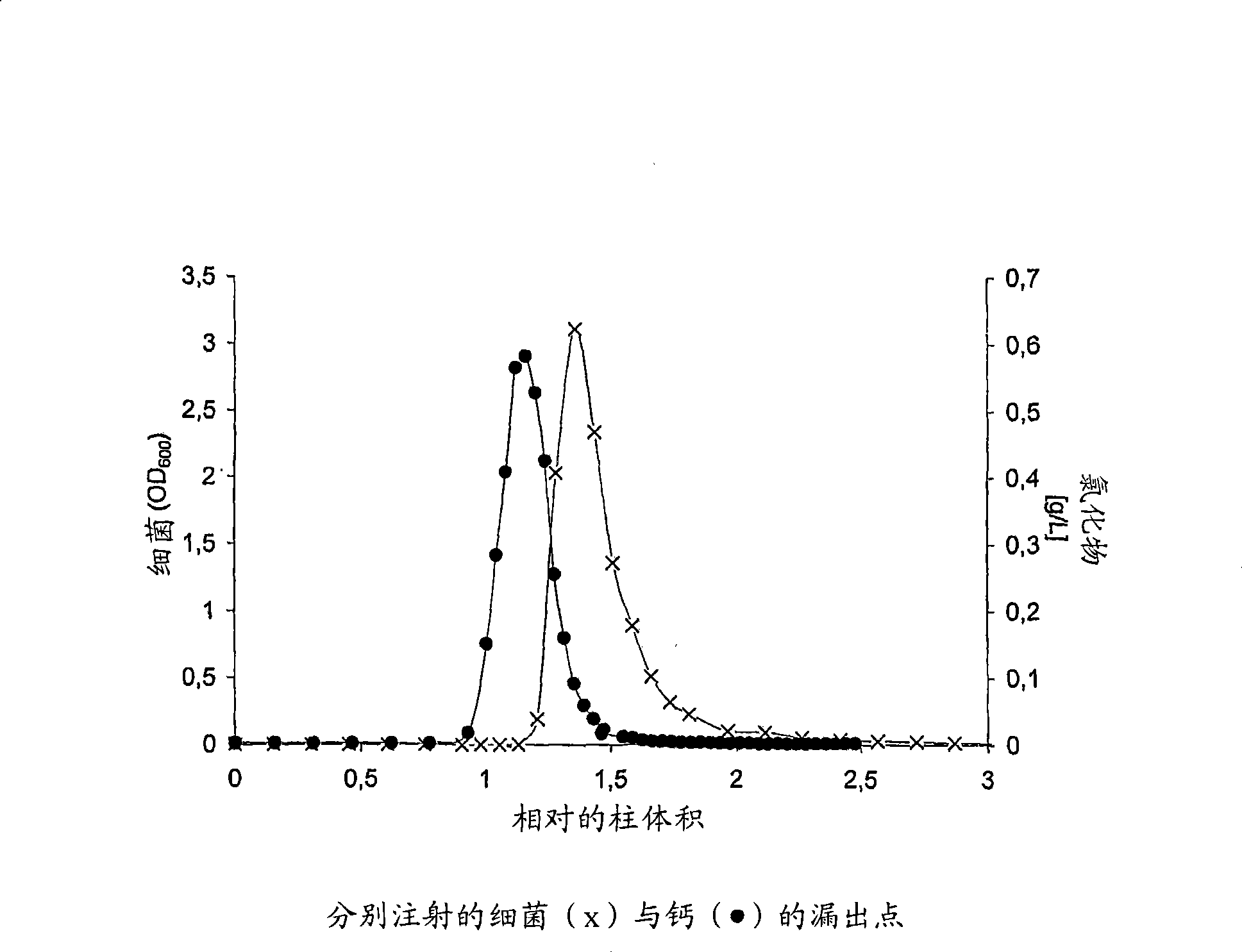Immobilisation of bacteria to a geological material
A technology of bacteria and geological bodies, applied to soil conditioning materials, chemical instruments and methods, fixed on or in inorganic carriers, etc., can solve the problems of adding mineralization media without teaching, flocculation solidification of bacteria, etc., to achieve Achieves mineral deposition, enhanced effectiveness effects
- Summary
- Abstract
- Description
- Claims
- Application Information
AI Technical Summary
Problems solved by technology
Method used
Image
Examples
Embodiment 1
[0046] Example 1: Flocculation of bacteria
[0047] Salts of different divalent cations were mixed with a suspension of bacteria of the genus Sporosarcina pasteurii (optical density at 600 nm = 1.0) at a temperature of 20°C to generate a final concentration of 20 mM divalent cations . These salts are Ni(NO 3 ) 2 , ZnCl 2 , Mg(NO 3 ) 2 , CaCl 2 .
[0048] After 5 minutes of mixing, the optical density at 600 nm was determined and compared to a control (bacterial suspension without added divalent cations). figure 1 Results are shown.
[0049] From the increase in optical density, it can be deduced that nickel, zinc, magnesium, and calcium are effective in initiating flocculation.
Embodiment 2
[0050] Embodiment 2: Determination of leakage point capacity
[0051] Use Itterbeek grit (d 50 = 420 μm) A column (circular ID (circular ID) of 1.6 cm, 1 m long) was packed to 1.7 g / cm 3 Density.
[0052] Inject 10 ml of 50 mM calcium chloride in a pulse. Thereafter, the column pumps calcium chloride through the column filled with ionized water and monitors the chloride level at the end of the column. image 3 It is shown that calcium chloride migrates through the material without being substantially delayed: after about one column volume, the front of the calcium chloride band reaches the end of the column, and at Within 1.5 column volumes, substantially all of the calcium chloride migrated through the material.
[0053] In a separate experiment, 10 ml of a suspension of Sporosarcina pasteurii bacteria (optical density at 600 nm 4.2) were injected in a pulse. Tests showed that the front of the band including bacteria reached the end of the column after more than one co...
Embodiment 3
[0054] Example 3: Immobilization of bacteria
[0055] With Itterbeek sand (d 50 = 420 μm) to fill a column (1.8 cm circular diameter, 6.8 m long) and keep it under saturation. Bacteria were injected (concentration = 0.5 mS / min) until they emerged at the column outlet. Immediately thereafter, the same volume of 50 mM calcium chloride was injected and allowed to stand for 1 hour. The column was then rinsed with three pore volumes of deionized water and fractionated for urease activity analysis.
[0056] Urease activity was determined by weighing a known volume of sand into a container and adding urea to a final concentration of 1M, monitoring the conductivity to obtain the urea hydrolysis rate (mS / min).
[0057] Urease activity was detected at various positions along the 6.8 m length of the column ( image 3 ).
PUM
 Login to View More
Login to View More Abstract
Description
Claims
Application Information
 Login to View More
Login to View More - R&D
- Intellectual Property
- Life Sciences
- Materials
- Tech Scout
- Unparalleled Data Quality
- Higher Quality Content
- 60% Fewer Hallucinations
Browse by: Latest US Patents, China's latest patents, Technical Efficacy Thesaurus, Application Domain, Technology Topic, Popular Technical Reports.
© 2025 PatSnap. All rights reserved.Legal|Privacy policy|Modern Slavery Act Transparency Statement|Sitemap|About US| Contact US: help@patsnap.com



